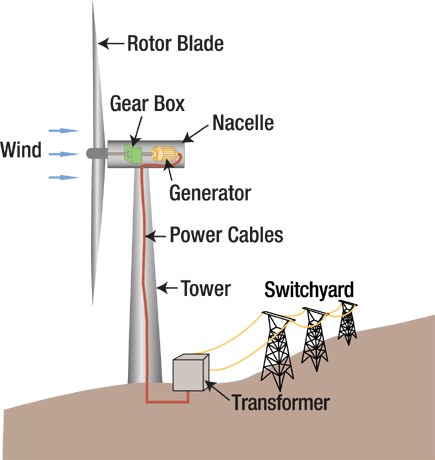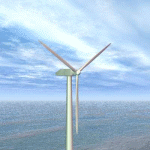 
|
How wind Turbines Work A wind turbine works the opposite of a fan. Instead of using electricity to make wind, a turbine uses wind to make electricity. The wind turns the blades, which spin a shaft, which connects to a generator and makes electricity The electricity is sent through transmission and distribution lines to a substation, then on to homes, business and schools. Modern wind energy systems consist of three basic components: a tower on which the wind turbine is mounted; a rotor that is turned by the wind; and the nacelle, which houses the equipment, including the generator, that converts the mechanical energy in the spinning rotor into electricity. The tower supporting the rotor and generator must be strong. Rotor blades need to be light and strong in order to be aerodynamically efficient and to withstand prolonged use in high winds. Towers are tall allowing rotors to be mounted farther off the ground, where winds are typically stronger.Rotors spin when driven by the wind, support blades that are designed to capture kinetic energy in the wind. Generators convert the mechanical energy of the spinning rotor into electricity. Most wind turbines use a generator and transmission in combination. Many of these wind turbines use two generators, a small generator for light winds and a large generator for strong winds. |